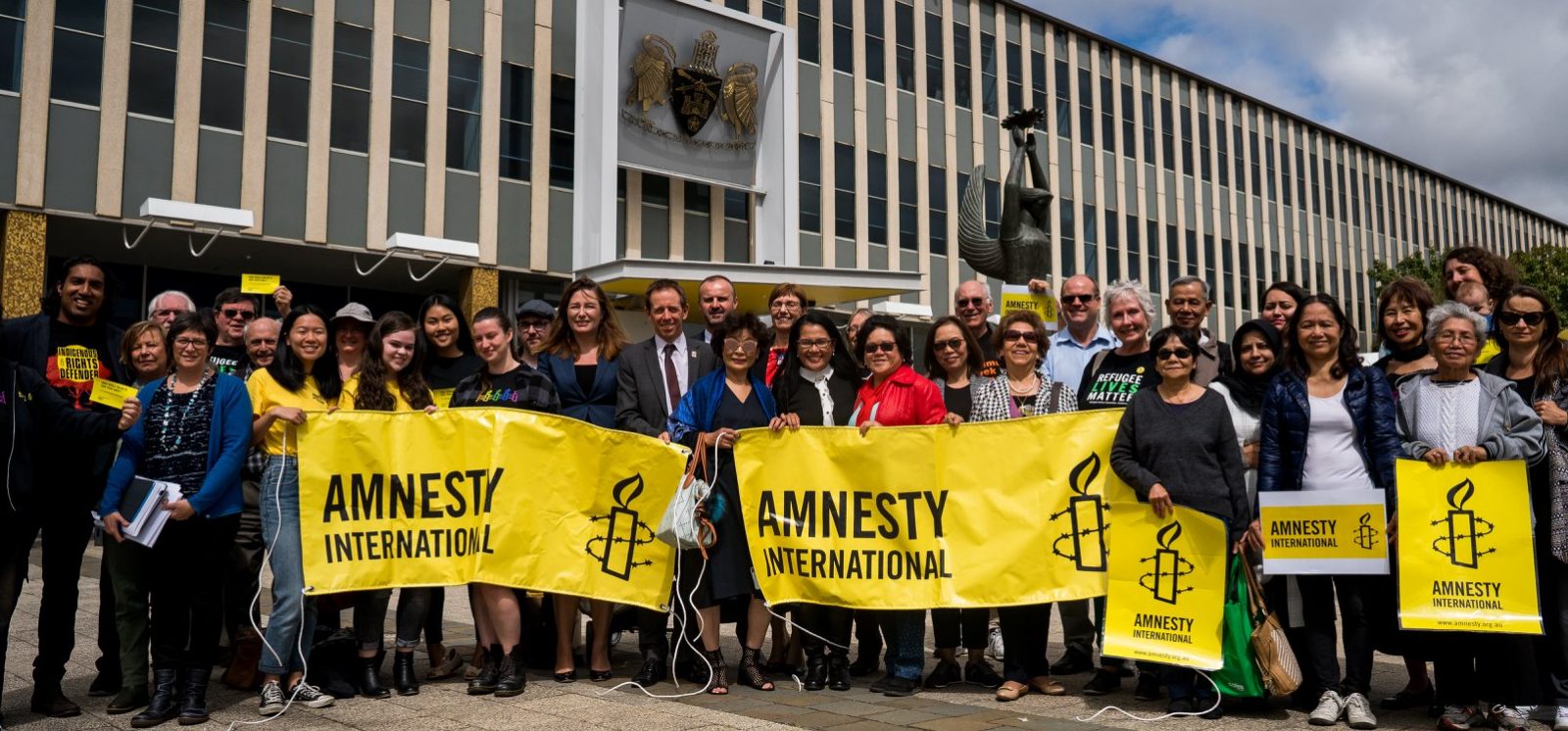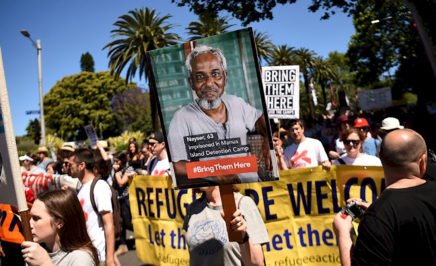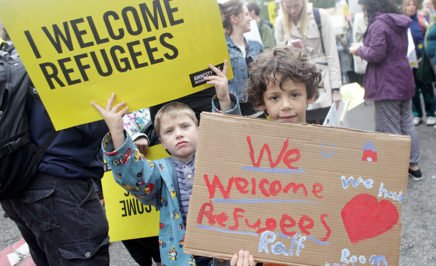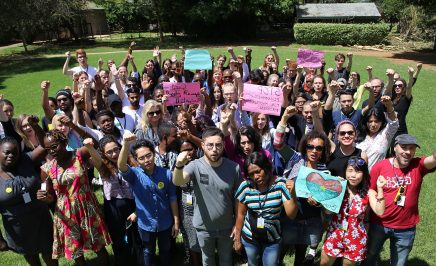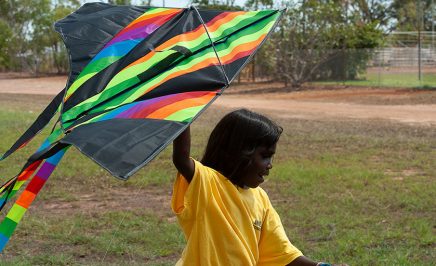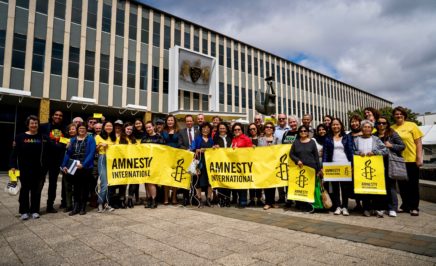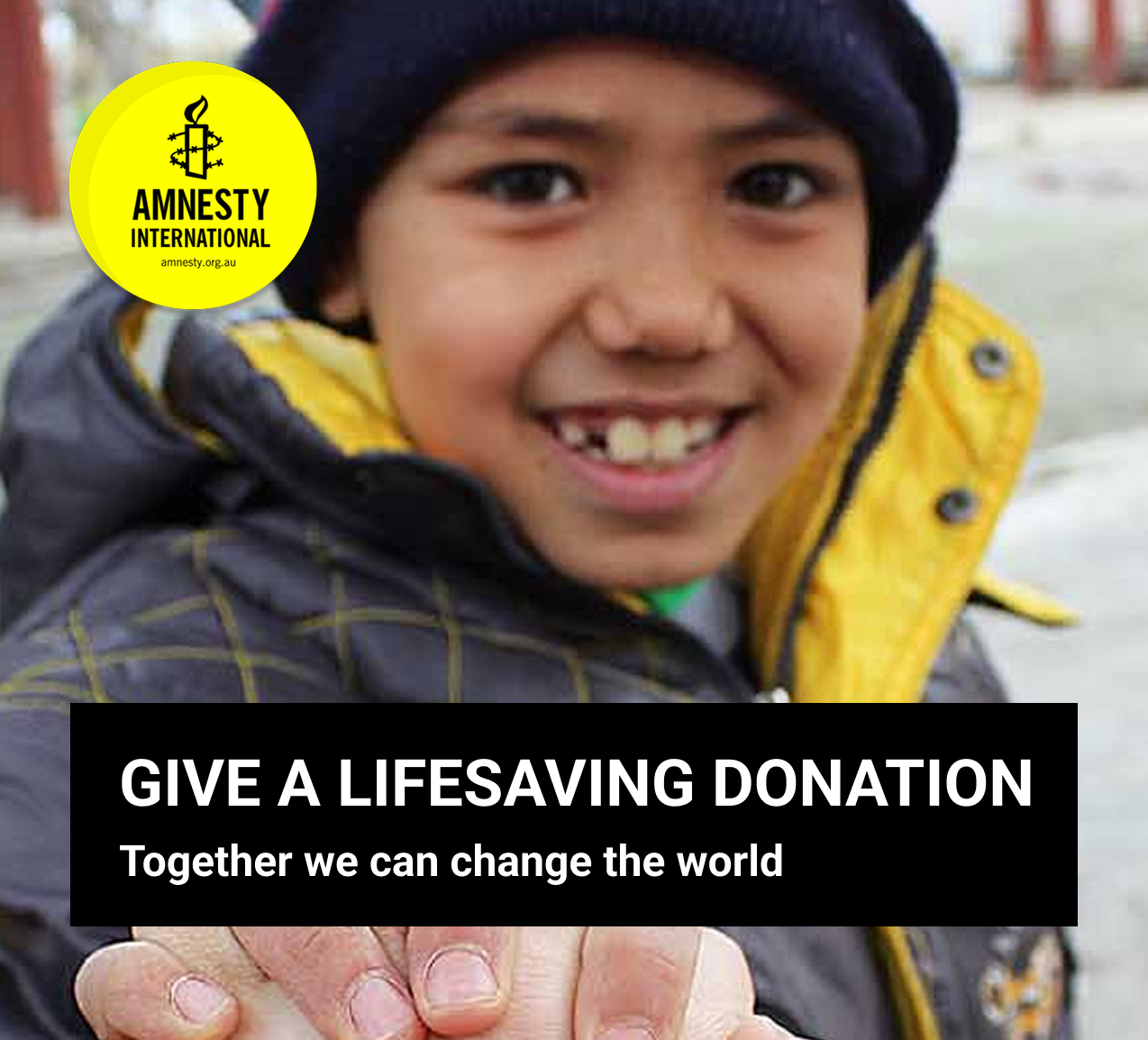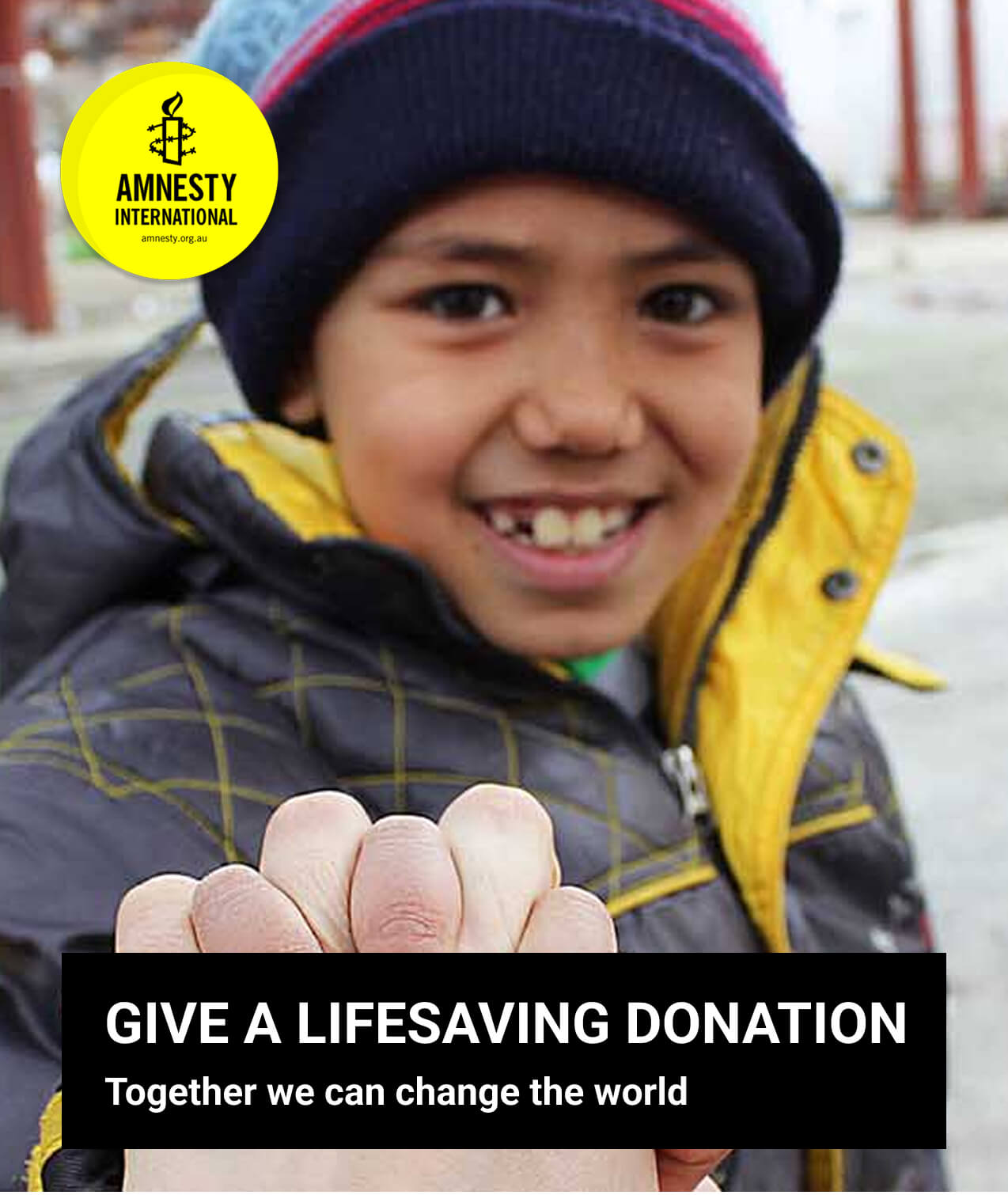By Johanna Larkin and Jill Moran
Johanna is studying Law and Arts at the ANU and convenes the ANU Amnesty International Group
Jill Moran is a policy expert and long time activist for women’s rights and human rights issues, based in the ACT
Last week, Amnesty International ACT achieved an enormous win for the national refugee campaign, My New Neighbour.
We wanted to share with you all our strategy to win in the ACT and how we successfully passed this milestone in only one month.
First of all, the ACT is unique, in that our Territory government is also our local government. We hope this can inspire activists around the country and set the tone for other governments and local councils to follow!
We did this with a core team of 6 volunteers, including students, retirees, young professionals and a local school teacher, and a few others who helped with calls and conversations at community stalls.
The Campaign:
Community sponsorship is an alternative model of refugee resettlement that allows communities to sponsor refugees and help them adjust to life in Australia. The Australian government’s current community sponsorship program is extremely inaccessible to the majority of refugees and is not in addition to the humanitarian intake.
Amnesty’s new campaign shows that a fair and accessible community sponsorship program is not only possible, it is desperately needed. We’re calling on governments of every level to support an expanded and improved model for community sponsorship, and we started with the ACT Legislative Assembly.
To reach our ambitious target of bringing a motion to the floor of the Legislative Assembly in just a few short weeks, we were going to need a solid plan. The idea was simple – talk to as many Members of the Legislative Assembly (MLAs) as we could, explain why community sponsorship matters, and convince them to support the motion.
We knew we had a good shot, as the ACT has a fairly progressive government and had already been declared a Refugee Welcome Zone. For many of our fellow activists, you may need to develop a strong ground base of community support before your local government will come on board.
Step 1
We gathered a list of our MLAs, and divided them amongst our diverse team of local activists. Many of us spent our time calling politician’s offices and organising to meet MLAs at community stalls or other events. By calling the offices of all MLAs we ensured all parties were talking about this issue and it was on their agenda. Of course, it was important to prioritise meeting with MLAs who have portfolio responsibilities related to the topic, but a key lesson for us was to be open to receiving support from all MLAs and all ends of the political spectrum.
We talked with staffers, set up meetings where possible and found out where and when politicians had stalls and public appearances upcoming. We put all this info into a spreadsheet for our team and assigned nominees to visit each event, chat to the relevant politician and staffers and provide them with information on the proposal.
We owe so much to the behind-the-scenes staffers and advisors who helped push from the inside to get this motion passed, and the MLAs whose enthusiasm and support proved invaluable.
Step 2
We were able to have early conversations with MLAs and staffers at their community stalls. Showing up at the markets on a weekend was really effective. In the conversations that followed (there were many), we made sure to focus on the tangibility of this campaign: it is solutions-based, focusing on positive ways that current policy can be reformed to not only support refugees but also benefit Australian communities.
We successfully talked with 18 out of 25 elected MLA’s from both Labor and Liberal parties as well as staff on both sides, in a blitz over two weeks of visiting community stalls. This included key portfolio ministers and shadow members of the opposition.
Step 3
At this stage, the exact specifics of the program did not need to be clearly mapped out. Johanna and long time volunteer Darryl had a sit down meeting with two Greens MLAs, Caroline Le Couteur and Shane Rattenbury, and their staffers, who hold the balance of power in the ACT.
At this meeting, it was more important to discuss the inadequacies of the federal government’s program and the simple ways that it could be made more accessible for refugees with the greatest need.
Referring to the positive outcomes of the Canadian model of refugee community sponsorship was very helpful here, given this model has been so successful precisely because it is accessible and in addition to the humanitarian intake.
This meeting was crucial in securing the support of Greens MLAs, who were able to introduce the motion and gain the support of the ACT Labor and Liberal parties, who had already heard from us and also from rights holders from Migrant and Refugee Settlement Services many times on this issue.
Step 4
Blitzing. We called Labor and Liberal offices again to ensure our message was clear. We also had a contingency to ensure support by targeting specific offices of those we knew were already sympathetic to the cause. We also planned to petition each electorate and present these to the relevant member but this in the end did not prove necessary for us.
Step 5
Showing community support for the motion
When the day finally arrived for our motion to be put to the floor, we were overwhelmed with anticipation and enthusiasm. Large numbers of supporters, activists and members of Canberra’s migrant community had come to the gallery to be a part of this moment. We felt proud to sit in that gallery, and to know that we had been a part of making it happen. To see those MLAs who we had called, emailed and met with stand up and declare their support for the motion was a brilliant moment. This included members of all parties represented!
The motion passed. We clapped, hugged, and went outside with our banners, placards and shirts. Alongside some key MLAs, we took the time for a quick photo opportunity, and to thank everyone who had been involved – from the activists, to the political staffers, to the amazing supporting team at Amnesty who offered invaluable guidance every step of the way.
We know that this motion is just one small step, but it is an important one.
We are proud to have been the first jurisdiction to get this motion passed, but we are just the start. We know that activists across Australia are keen and eager to see a fair and equitable humanitarian intake program in Australia.
We hope having our example to point to will give you encouragement in approaching your own local community and governments. The #MyNewNeighbour campaign provides an opportunity to build a community-led, grassroots campaign that creates new pathways for refugees to settle in Australia. To sign the petition for community sponsorship, click here. Better yet, get involved in the campaign to make it happen.
It’s time to start focus on the solutions.
Get involved in the Community Sponsorship Campaign
